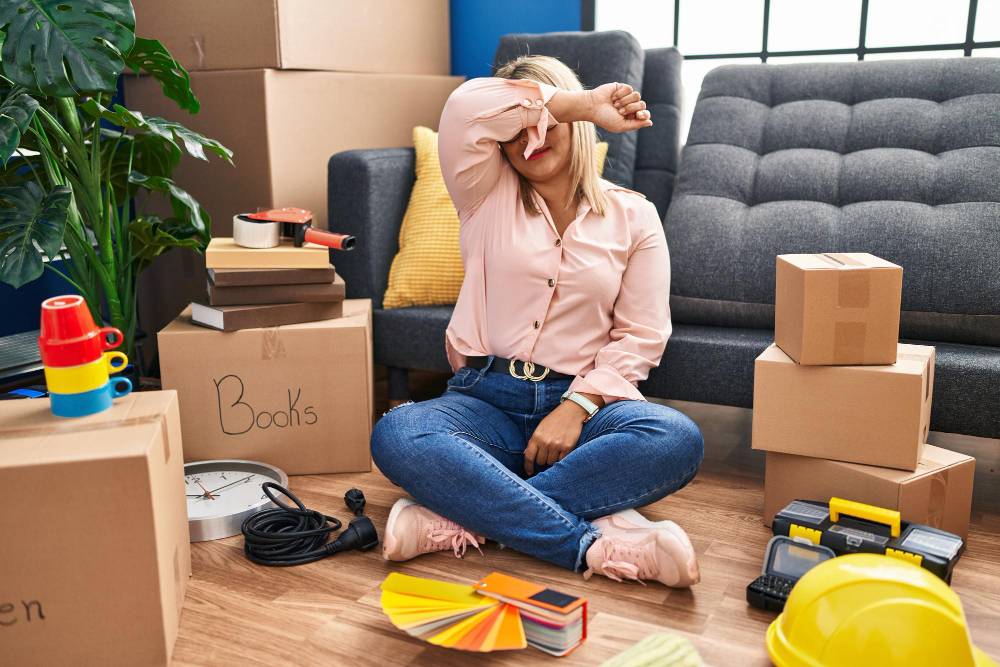When planning a move or decluttering your home, choosing the right storage unit size is just as important as selecting reliable portable and storage movers. The right movers can deliver a perfectly sized unit to your doorstep, making packing and transport easier while saving you money on unused space. By combining proper storage sizing with professional moving support, you can avoid damage, reduce stress, and simplify the entire moving process.
Standard Storage Unit Sizes Explained
Most self-storage companies offer units ranging from small 5×5 spaces to large 10×30 units. These measurements are given in feet, and the total area (square footage) helps estimate capacity. Some facilities also offer climate-controlled units, which may affect available sizes. Here’s a breakdown of what typically fits in each size:
5×5 Storage Unit (25 sq. ft.)
A 5×5 storage unit is comparable to a small closet. It’s perfect for:
- Seasonal items like holiday decorations, winter coats, or sports equipment.
- Small boxes or personal items such as files, books, or collectibles.
- Dorm or studio essentials if you’re a student needing temporary storage between semesters.
This unit is cost-effective for those with minimal storage needs or individuals living in apartments with limited space.
5×10 Storage Unit (50 sq. ft.)
This size is like a walk-in closet and works for slightly larger needs, such as:
- Small furniture like chairs, nightstands, or a twin-size mattress.
- Bikes, camping gear, or hobby equipment that doesn’t fit at home.
- Contents of a studio apartment or one-bedroom’s worth of boxes.
It’s an excellent choice for people transitioning between apartments or storing items during minor renovations.
10×10 Storage Unit (100 sq. ft.)
A 10×10 unit equals about half a standard garage and can fit:
- Furniture for one to two bedrooms, like beds, sofas, dressers, and appliances.
- Around 100–150 medium boxes stacked neatly.
- Household appliances like washers, dryers, or refrigerators.
This size is ideal for small families or couples who need to store their home contents while relocating or downsizing.
10×15 Storage Unit (150 sq. ft.)
For larger storage needs, the 10×15 unit accommodates:
- Furniture from a two-bedroom home or small house.
- Multiple large appliances plus bulkier items like sectional sofas.
- Business inventory or office furniture, if using it for commercial purposes.
This unit is also useful if you’re remodeling and need to clear out several rooms temporarily.
10×20 Storage Unit (200 sq. ft.)
This is equivalent to a single-car garage and works for:
- Contents of a three-bedroom home, including patio furniture and garage items.
- Small vehicles like motorcycles, ATVs, or jet skis (check facility rules).
- Business equipment or stock that doesn’t fit in an office space.
If you’re planning a long-distance move, this size ensures everything fits in one unit without overstuffing.
10×30 Storage Unit (300 sq. ft.)
The largest standard option, perfect for:
- Entire four- to five-bedroom homes with furniture, boxes, and outdoor equipment.
- Large vehicles or trailers in facilities that allow mixed storage.
- Commercial storage for contractors, retail stock, or seasonal displays.
Great for families relocating cross-country or businesses needing bulk space for equipment or inventory.
How to Determine the Size You Need
Take Inventory of Your Belongings
Write down every item you plan to store, furniture, appliances, and boxes. Measure larger pieces and group smaller items into estimated box counts. This helps create a realistic view of the space required.
Visualize the Space
Many people underestimate how much volume furniture occupies. To avoid this, use painter’s tape to mark unit dimensions on your floor and test-fit your belongings. Some storage companies also provide virtual calculators or 3D space estimators for better visualization.
Consider Accessibility
Ask yourself: Will you need to access items regularly? If so, leave room for an aisle or walkway inside the unit. A unit packed wall-to-wall might seem efficient, but it can make retrieving items later extremely difficult.
Factors to Consider Before Renting a Storage Unit
Climate Control Needs
If you’re storing electronics, wooden furniture, artwork, or important documents, a climate-controlled unit is essential to prevent damage from heat, humidity, or cold.
Duration of Storage
For short-term storage (like one to three months), you can pack items more tightly. For long-term storage, leave extra space to allow airflow and reduce the risk of mold or mildew.
Budget and Location
Larger units cost more, and prices vary depending on facility location and amenities. Urban areas tend to have higher storage costs, while suburban or rural facilities may be more affordable.
Tips to Maximize Your Storage Space
- Use Vertical Space: Stack boxes up to the ceiling with heavy ones on the bottom and lighter, fragile items on top. Add shelving to optimize space and improve access.
- Disassemble Bulky Furniture: Remove table legs, headboards, and shelves to save space. Store hardware in labeled bags and tape them securely to the furniture.
- Pack Efficiently: Use uniform box sizes for easier stacking, fill gaps with linens or towels, and label boxes clearly for quick identification.
Need Help Moving Into Storage?
Choosing the right unit is only the first step; getting your belongings there safely is where AFA Movers makes it easy. Our team packs and wraps items to prevent damage, loads and unloads efficiently to maximize every inch of space, and even guides you on selecting the right unit size for your home and move type. Planning to store your items soon? Call AFA Movers today for a free consultation and enjoy a stress-free storage move.



